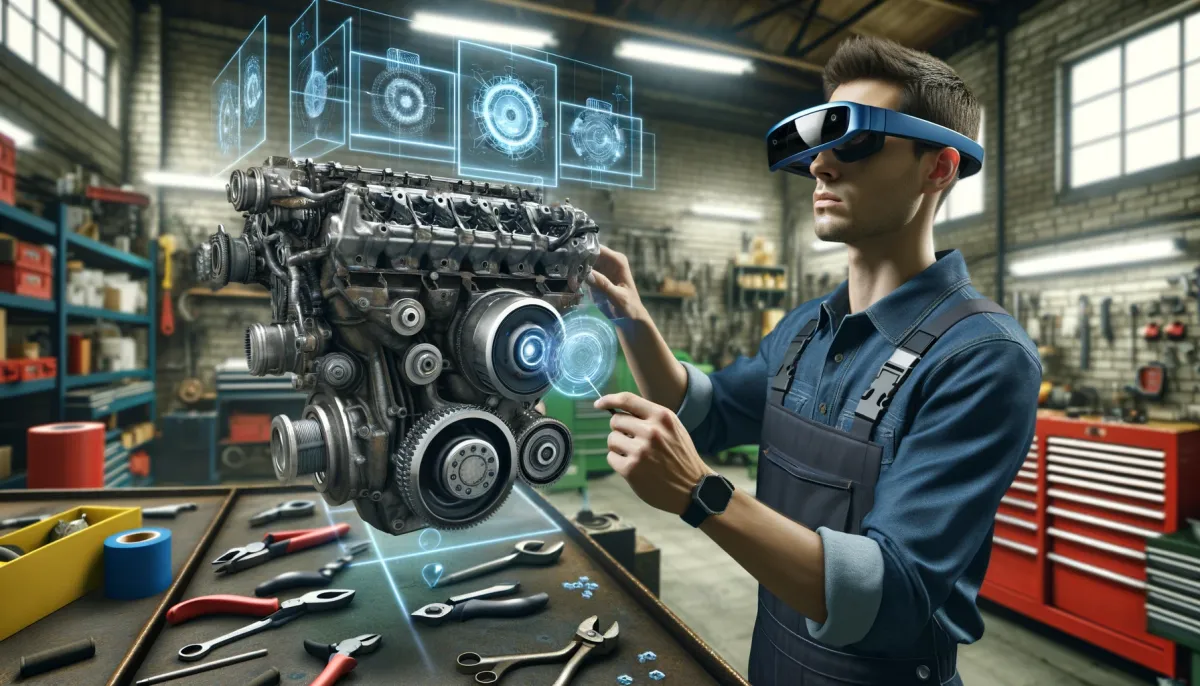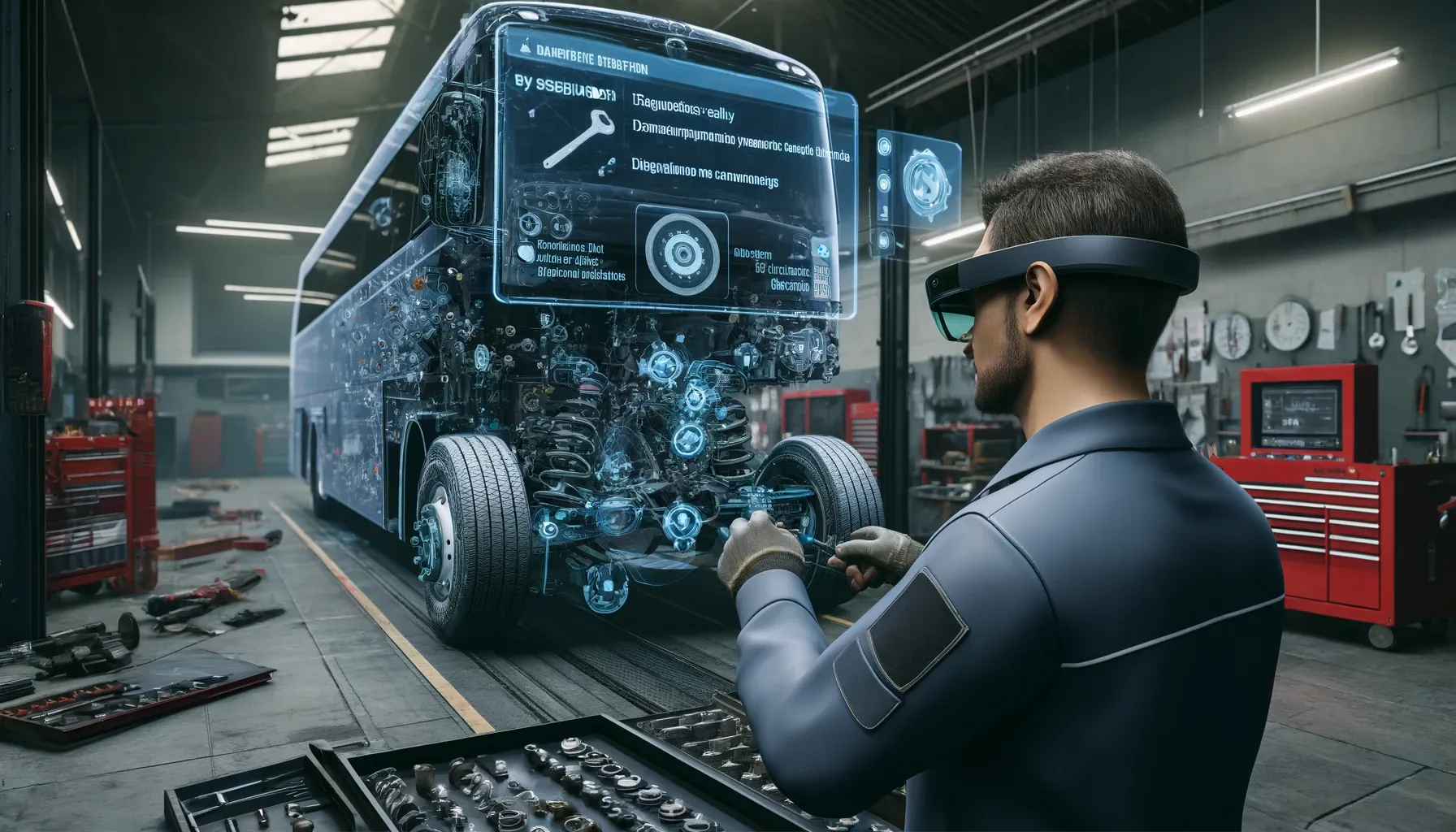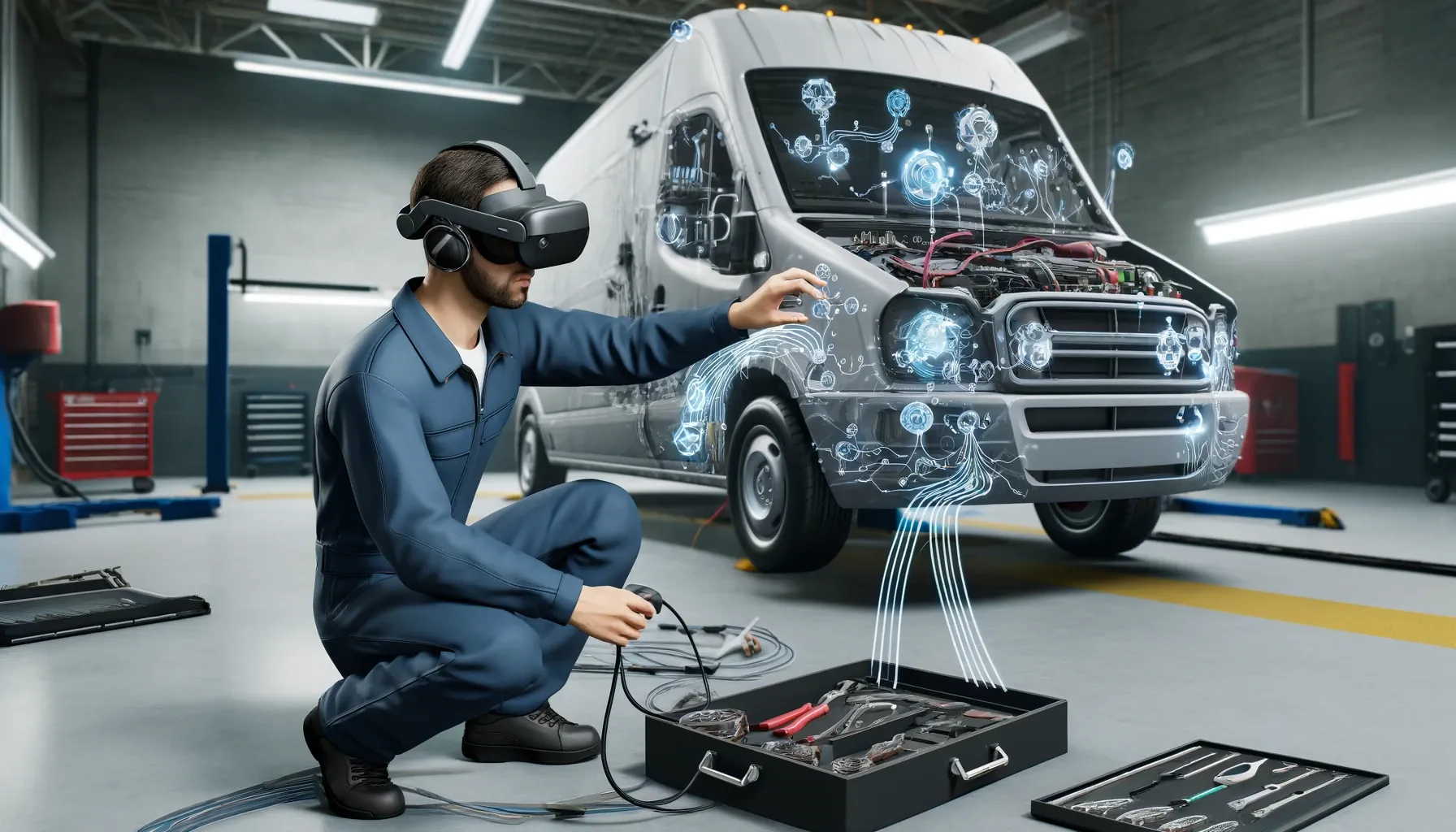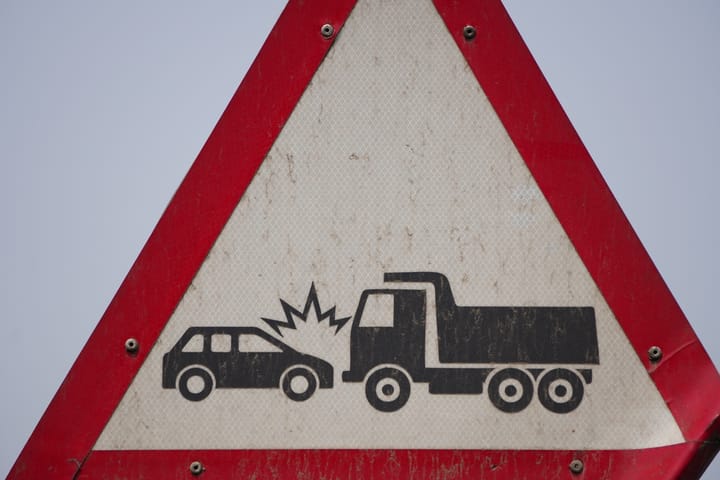Virtual Training, Real Results: Trucking's Game-Changing Tech
Discover how virtual and augmented reality are enhancing training, safety and efficiency in the trucking sector, reshaping traditional fleet operations.

By Alan Schmadtke, for The Inside Lane
If you were asked to envision someone engaged with virtual reality, what images come to mind?
Teenagers wearing headsets, sitting on a couch, controllers in hand? Try again.
Virtual reality (VR) and its many siblings — augmented reality (AR), mixed reality (MR), extended reality (ER) and whatever comes next — have landed in the American workplace. They’re deep in the trucking industry, and they’re not leaving. In fact, similar advanced technology is expected.
Drivers, mechanics, dock workers, designers and engineers are among the job functions already using reality-altering technologies that trucking businesses use to bolster training and efficiency.
Major truck fleet operators have been testing or training drivers, mechanics and other staffers using VR and AR for years.
“With the EVs coming in, what we’re seeing is when the technicians get hired, the transition of servicing an EV car from a traditional one can be difficult,” said Caroline Duepuis, senior vice president of extended reality products at The Learning Network, which builds training programs for trucks and other industries, including healthcare.
“XR helps some of our clients bridge the gap and prepare the technician to understand how to service EV cars and trucks.”
Duepuis told The Inside Lane that for the trucking industry, her company focuses on building training modules for vehicle repairs and pre-drive inspections for drivers. In both cases, the goal is to ramp up human learning about new and ever-changing equipment.

VR and AR: Transforming fleet management
Major U.S. fleet owners — UPS, FedEx, XPO Logistics, J.B. Hunt Transport Services and others — are well into multi-million-dollar investments of various VR and AR solutions. Such investments have multiple touchpoints in many parts of the industry. VR and AR are separate paths of technology-based solutions.
For small to mid-sized fleet owners, the appeal of VR, AR, and XR technologies extends beyond the novelty to tangible benefits that directly impact the bottom line. Enhanced safety and reduced costs emerge as a primary advantage.
Implementing VR in training allows drivers to experience and react to various road conditions and emergencies in a risk-free environment. This proactive approach to training can significantly decrease the likelihood of accidents, leading to lower insurance premiums and repair costs.
Moreover, AR's capability to overlay digital diagnostics and repair instructions onto real-world scenarios can streamline maintenance processes, reduce vehicle downtime, and extend the operational lifespan of fleet vehicles.
Beyond the normal human challenges (begrudging adoption and lack of leader support), the primary issue is money. Costs for VR training range from $40,000 to $150,000 or more, a daunting figure for small- and mid-sized fleet owners. A pilot program is less, between $40,000 and $60,000.
The price for custom training is even higher. However, these are mostly development and startup costs, and the price per trainee falls over time as companies plug more employees into their training.
“The difference between XR and traditional learning is the hands-on component,” Depuis said. “Hands-on comes with a better retention of the topic at hand. That’s a plus.”

What is the difference between AR and VR?
Virtual Reality (VR) requires hardware, such as a headset that covers the eyes, to put a user in a computer-generated world.
Augmented Reality (AR) takes digital images, often real ones, and layers them on top of the real world. It often requires a visor or smartphone.
To put it simply: With VR, you could experience driving a truck in inclement weather. With AR, you could examine a worn tire on a truck, and then layer images of other worn tires to gauge just how bad the tire really is.
Mixed reality (MR) is also part of technology, as is extended reality (XR), which is VR plus AR. Together, the technologies can help a fleet business in several ways, including:
- Driving: The obvious training has many upsides, including putting neophyte drivers in a simulator and teaching them how to park, navigate and drive with safety — all without endangering an expensive rig when mistakes get made.
- Repair work: AR can help mechanics diagnose issues and visualize solutions. Also: Think about diagnosing an engine problem by a sound or a leaking fluid. The possibilities are endless.
- Packing and delivery: Companies like XPO Logistics use VR to train dock workers on the best ways to pack, load and unload pallets and trucks to save time, money and decrease freight damage.
- Fleet development: Although it’s Fortune 500 delivery companies driving the next generation of fleet design with virtual and visualization, that, too, will trickle down.
- Healthcare and fleet care: With better training all around, employees make fewer mistakes on the job. The result is fewer accidents that damage trucks and cause personal injuries at work.
Future of VR training and development
This is merely the latest iteration of technology and training. UPS began using VR in 2017 and acknowledges using it to train drivers to recognize safety hazards. But in almost all cases, simulations can put people into situations that are difficult or impossible to replicate in the real world.
Trimac, a Canadian-based bulk carrier, went virtual in 2018 after discovering that drivers with 20 years of experience were prone to making mistakes in emergency situations. So, how could it trust drivers with less experience?
Proponents say that in simulated environments, drivers, mechanics and others develop muscle memory, better psychomotor skills, better retention, recall and more confidence than they do in more hands-on training. In fact, multiple U.S. armed forces used simulators in training prior to World War II.
Even touch screens mean a lot. The Learning Network’s data suggests trainees who use touchscreens retain more information when they get into the field following training, said Tito Tbaily, senior vice president of marketing for The Learning Network.
Eventually, success stories from the big trucking players will filter down to mid-size fleet owners and others. History suggests the technologies will get less expensive, more tech companies will enter the space and VR and AR will gain more market presence.
Representatives for UPS and FedEx did not respond to interview requests, but UPS’s early adoption of virtual and augmented reality is well-documented. The company has a team of innovation and technology specialists to expand the company’s efficiency and inform internal business units about what’s on the horizon.
While VR and AR are not yet prevalent in repair shops or truck training facilities, potential benefits are there. As costs decrease, user comfort increases and the technology matures, VR/AR is poised to become a more transformative force.
Many, if not most, small and mid-sized fleet owners can’t afford to pay for company-specific VR/MR training programs. But software developers are building more off-the-shelf solutions, which are more affordable than custom products. Plus, companies can customize many of these cookie-cutter products to solve their current training issues.
“We’re a solution provider,” Tbaily said. “We have to be good at listening about what the problem is to solve that, whatever it is.”
Have a question or comment about this article? Email Bianca Prieto at editor@theinsidelane.co
Not yet a subscriber? Join here.
Sources:
N.A. (2024). Commercial Truck Driver Demographics and Statistics in the US. Zippia. Retrieved from https://www.zippia.com/commercial-truck-driver-jobs/demographics/
Eubanks, A., et al. (2022, October 31). Past Present and Future of Simulation in Military Medicine. StatPearls. Retrieved from https://www.ncbi.nlm.nih.gov/books/NBK553172/
Day, N. (2021, April 30). Mitigate Virtual Reality Training Costs: 5 Ways to Save Money. Roundtable Learning. Retrieved from: https://roundtablelearning.com/mitigate-virtual-reality-training-costs/
Larson, H. (2021, March 19). UPS takes driver safety to the next level with virtual reality. TruckingDive. Retrieved from: https://www.truckingdive.com/news/UPS-driver-training-virtual-augmented-reality-AR-VR/596831/
Hirsch, J. (2021, February 19). Trucking Explores Augmented Reality to Enhance Training, Operations. Transport Topics. Retrieved from: https://www.ttnews.com/articles/trucking-explores-augmented-reality-enhance-training-operations
Scherbatko, M. (2021). White Paper: The Role and Future of Immersive Training in Enterprises. Program Ace. Retrieved from: https://program-ace.com/wp-content/uploads/White-Paper-XR-Training_v3.pdf
Cannon, J. (2020, Jan. 16). Innovators: Trimac Transportation removes real-world dangers through virtual reality training. Commercial Carrier Journal. Retrieved from: https://www.ccjdigital.com/ccj-innovators/article/14939162/trimac-transportation-invests-in-vr-training-for-drivers
Della Rosa, J. (2017, June 20). J.B. Hunt testing augmented reality and other ideas to become a ‘technology company’. Talk Business & Politics. Retrieved from: https://talkbusiness.net/2017/06/j-b-hunt-testing-augmented-reality-and-other-ideas-to-become-a-technology-company/
N.A. (ND). Understanding virtual reality and augmented reality. GCFGlobal. Retrieved from: https://edu.gcfglobal.org/en/thenow/understanding-virtual-reality-and-augmented-reality/1/
N.A. (ND). Virtual Reality Training Pricing. Austin Visuals. Retrieved from: https://austinvisuals.com/virtual-reality-training-pricing-how-much-does-it-cost-to-implement-vr-training/
N.A. (ND). VR & AR for Automotive and Transportation. iQ3Connect. Retrieved from: https://iq3connect.com/industries/automotive-vr-ar





Comments ()